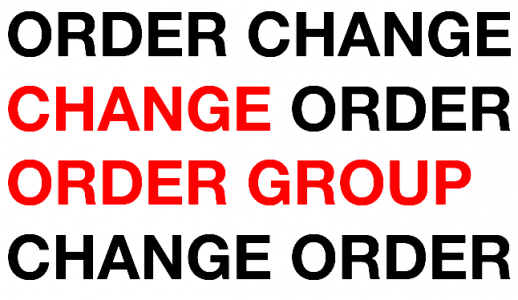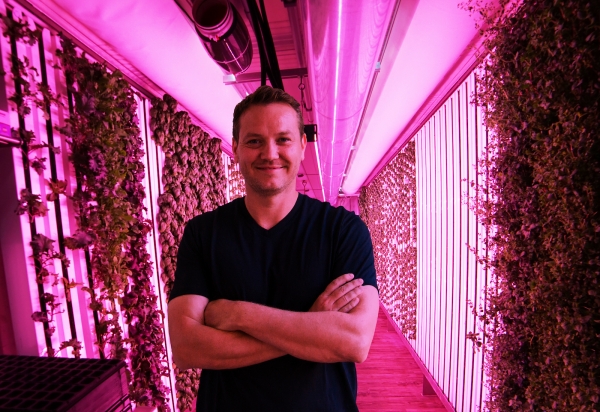I can’t speak for him, but my love for Thomas Kosbau was near-instantaneous.
I met him through our mutual friend Joe—a respected NYC development pro—at the New Lab’s anniversary party in the fall of 2018. Within moments, I realized I met someone who got it.
“Getting it” to me means someone who recognizes the interconnection of all systems, animate and inanimate—e.g. housing without access to food, water, and economic opportunity is a dwelling in which to survive, not a home to thrive in. I could tell Thomas was far more concerned with architecturally-adjacent sectors such as food, water, energy, and mobility as he was with cranking out plans for green-washed buildings that would prove his architectness.
Thomas also spoke plain English rather than Architectese, a tongue I am fluent in, yet am loathe to use due to its ponderous, intentionally-abstruse structure.
More remarkable than talking the talk in comprehensible language, Thomas had a ton of relevant experience working with major NYC and international development partners—this was despite his young age of 39 when we met.
It turned out he designed one of my favorite Brooklyn projects, the shipping-container popup DeKalb Market. The market was situated in a lot that would eventually become the massive mixed-use City Point Brooklyn development.


For a season or two, the market was an extremely popular “third space” for Brooklyn’s then-relevant cultural scene. While other architects would have been excited to get another generic tower in downtown Brooklyn, Thomas was focused on making downtown a place one would want to rent an apartment (he later designed the shell-space for the DeKalb Market Hall in the City Point Brooklyn building).
He had been a part of a major rehab of Carnegie Hall (worth hearing about in the podcast), a building I’m quite fond of, not least of which because my great-grandfather had his memorial service in its main hall.
The guy had chops.
We cut our New Lab conversation short since it was clear we couldn’t cover the ground we needed to in the din of the crowd. We exchanged emails and I eventually asked him if he was willing to appear on the podcast I was starting to support my newsletter and consultancy.
This podcast for February 2019 is the fruit of those conversations, available on Apple Podcasts and/or Spotify.
Later in 2019, I came up with the idea of The Change Order Group (COG).
COG’s product offering is the kind of holistically-designed real-estate development Thomas was known for: climate-focused with programming for food, water, energy, and local-economics with low-no-carbon construction and operations.
Thomas and a handful of others were the people actually proving these elements could be brought together in practical ways in real-world market conditions. He had deep experience working with change-resistant, cumbersome public and private institutional developmental and investment partners. This distinction made Thomas a million times more valuable than his “peers” who may have produced perfect prototypes and one-offs with sloppy money from lazy VC’s and private-equity investors.
Around the time of this podcast, I was producing a white-paper for Lowe’s Home Improvement Innovation Labs about the future of housing. I was also privy to the inner-workings of several other innovation teams (e.g. IKEA) and their efforts to understand what housing would look like in the future. If anyone knew what was good, it was me. I knew Thomas was good and I really wanted him on my founding team, though I tried to stay unattached since he had his own shop and several compelling side-projects.
I cranked out the first version of the Change Order Group’s pitch deck in an hour or two in August, 2019. My excitement ran high when Thomas and many others expressed their interest in participating.
I’ll leave what transpired between August, 2019 and December, 2020 to the historians (plagues, infernos, flights from cities, pandemonium).
What can be said about the interval is that it affirmed every one of my premonitions about the trajectory of society: extreme economic and climatic instability, social foment verging on open revolt, public-health crises, and the increasing hopelessness that government and large institutional bodies will deal these problems in timely, meaningful ways. The global response to COVID-19 is enough for me to divorce my plans from those of the masses and their presumptive institutional saviors.
I’m going to do my little thing over here because what if 2021 brings another bug, a global drought, or worse fires in California than 2019 and 2020? These are all reasonable assumptions. Do we really want to rely on current debt-and-resource-hoarding business-culture or government to handle these problems? I don’t and, frankly, won’t.
And speaking for myself, and as someone who lived through eight years of Obama-Biden economic, social, and environmental policy, I don’t have high-hopes for the incoming administration’s ability to right the ship from its present-day disastrous course. I am happy to be proven wrong, but I won’t bet my kids’ future on it.
The Change Order Group is the development engine for doing what needs to be done to save humanity (I love krill, but it’s humans who get me out of bed in the morning).
Numerous, highly-populated regions of the planet will soon be unsuitable for human habitation because of anthropogenic (i.e. human-made) forces. Immediate and drastic action is the only recourse for making earth (any region) a hospitable place for future generations to come.
Buildings are humankind’s main touch-point with the earth and a great place to start saving humanity. Their construction and operations are responsible for at least 40 percent of global GHG emissions. Their placement impacts and maintains eons-old social, cultural, and economic conflict. If humans want to stay on good terms with each other and the earth (questionable, at present), we must re-imagine every aspect of how buildings are planned, designed, constructed, sold, operated, and occupied. And here’s the trick party: this must be done immediately from where we’re at, likely spending insane-money, working with change-resistant-partners in marketplaces teetering on the brink.
This is what I do and have always done. This is what Thomas does and has always done. We’ve looked straight at ugly and superficial realities supporting nefarious motives and we did our best to replace them with beautiful and lasting environments that support life.
And while I am happy there seems to be growing recognition of the immediate and impending threats posed by climate, public-health, and social-justice issues in the development world, I am not happy about the procession of über-institutional instant-expert-phonies who’ve sprung-up in mainstream real-estate investment and development circuits. History, depth-of-knowledge, and track-record are the arbiters of fitness, not press-releases, hashtags, and hair-gel (I’m staring right at you, Brendan Wallace).
I’m beyond thrilled to be working alongside Thomas, who has that history, depth-of-knowledge, and track-record to translate lofty-conversations into tangible, constructable, and investment-grade real-estate projects.
More soon on what those projects look like. In the meantime, have a listen.
David


[…] has his own post, so I won’t spend much time repeating my enthusiasm for having him in the group. Thomas and […]
LikeLike